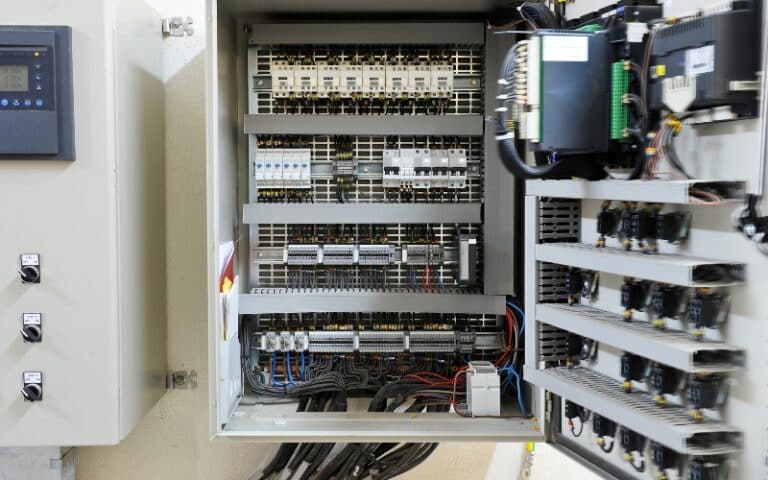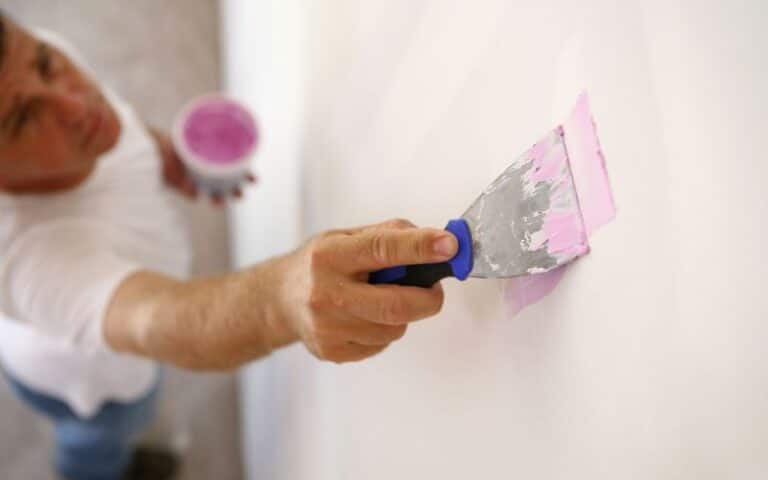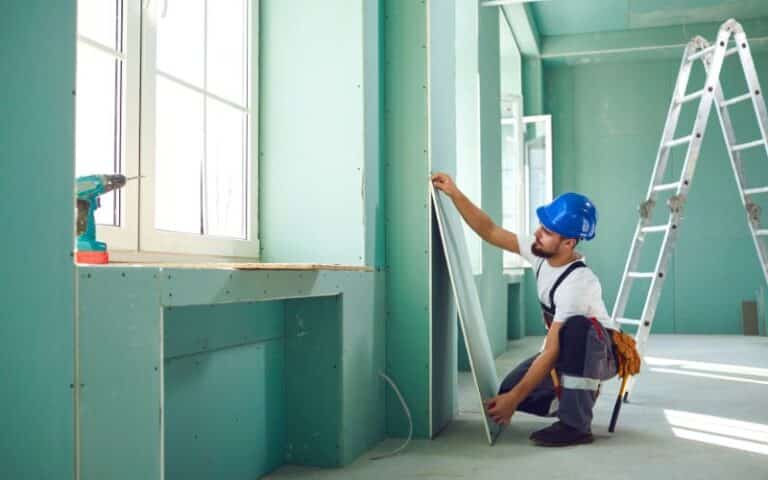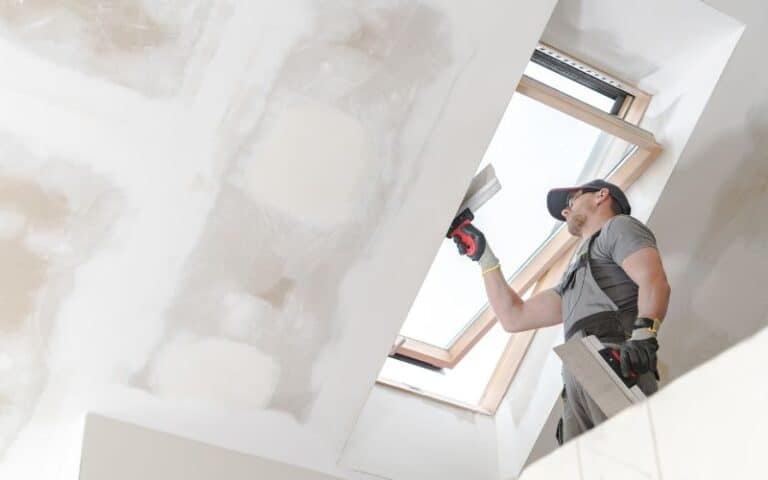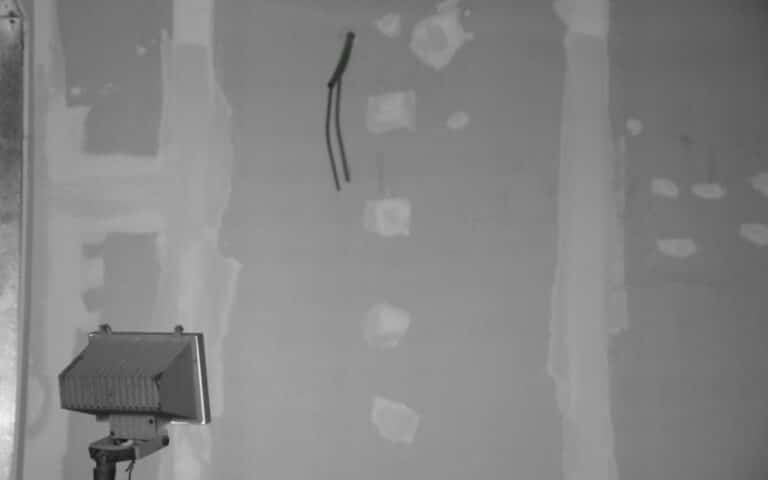Popped screws can be an indication of an issue behind drywall. So, you’d need to act fast to fix this problem.
However, you’ll have to do more than simply drive these screws back into the wall to solve this problem.
This article contains all the information on popped drywall screws. And how to reattach them back correctly to prevent this problem from resurfacing.
Drywall screw pops are generally not a serious issue, as they are usually caused by the drywall installer using too many screws. However, if there are many screw pops, it could indicate a larger problem, such as compromised framing or foundation materials. So, inspecting these areas carefully and repairing potential structural issues is important.
You shouldn’t ignore any signs of screws popping out of your drywall. This article will guide you if you’re unsure what to do after noticing these signs.
By the end of this article, you’ll understand why these screws popping out of your drywall can indicate danger.
And the steps to follow in fixing these problems so they don’t become recurring.
Ready for a Drywall Quiz?
Do Drywall Screw Pops Pose Danger?
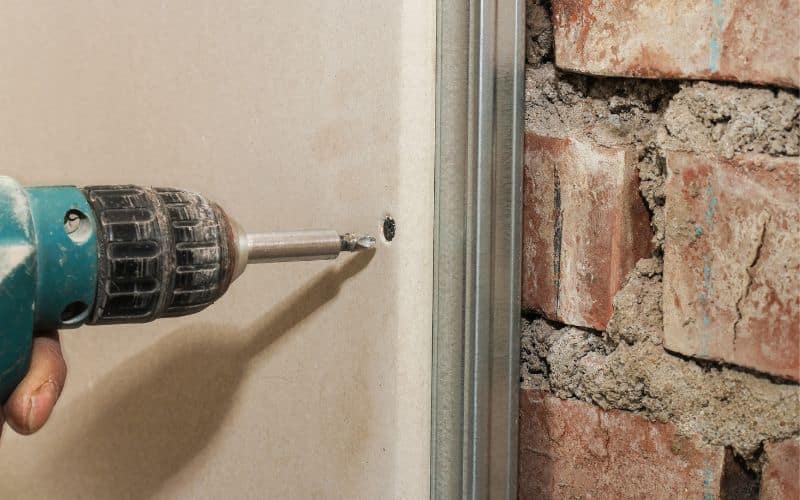
Drywall screw pops don’t typically pose a direct danger to individuals. However, they can indicate a structural issue with the wall or ceiling.
And may compromise the stability of the structure over time if you fail to address it.
Drywall screw pops occur when the screws you’ve used to secure the drywall to the studs or ceiling joists become loose.
They push the drywall out, creating a bump or indentation in the surface. The primary cause of screw pop is the house’s settling, which can cause the studs or joists to shift slightly.
And this puts pressure on the screws and causes them to pop out.
While drywall screw pops aren’t an immediate safety concern, they can indicate a larger wall or ceiling structure issue.
If unchecked, screw pops can grow in size and number, eventually causing the drywall to sag or even collapse.
In addition, screw pops can make it difficult to hang objects on the wall, as the screws will not hold securely in the weakened drywall.
So, to address screw pops, it’s important to identify the underlying cause of the problem, such as settling or inadequate screw placement.
Getting a professional contractor or handyman to evaluate the situation and recommend the appropriate repairs will greatly help.
These repairs may include re-securing the drywall with additional screws, replacing damaged drywall, or reinforcing the studs or joists.
By addressing screw pops early, you can prevent further damage to your walls or ceiling and ensure the safety and stability of your home.
Should You Fix Drywall Pops or Just Leave them?
It’s always best to fix drywall pops rather than leaving them, as they can indicate a more serious issue with the drywall or the framing behind it.
Because of this issue is left unaddressed, the problem can worsen and lead to further cracking or even structural damage.
Fixing drywall pops typically involves removing the loose screw or nail and applying a new one. And then patching and smoothing the area with joint compound.
Thus, addressing the underlying issue, such as inadequate framing or improper installation, is important to prevent recurring problems.
In summary, it may be tempting to leave drywall pops as they are.
However, it would help if you fixed them to prevent further damage and ensure the wall’s structural integrity.
When Should You Be Concerned With Drywall Screw Pops?
Drywall screw pops can be a common issue during installation, but you shouldn’t ignore them.
Although this can be a cosmetic issue, it can also indicate that the drywall isn’t securely fastened to the studs behind it.
And this problem, as stated earlier, can affect the wall’s structural integrity over time. So, if you notice drywall screw pops, it would be best to address them promptly.
That said, here are some situations when you should be concerned with drywall screw pops:
#1. New Construction or Remodeling
If you’re building a new home or renovating, inspecting the drywall installation for screw pops is always best.
Doing this will help ensure that the drywall is securely fastened and will not cause any problems in the future.
#2. Exterior walls
Drywall screw pops on exterior walls can be especially concerning because they allow moisture to penetrate the wall.
This situation can lead to mold, mildew, and other problems that can affect your family’s health and the integrity of your home.
#3. Large screw pops
If the screw pops are large or numerous, it may indicate a more serious problem with the drywall installation.
The main causes of this may be improper installation, poor quality drywall, or other related issues.
#4. Cracks or other damage
Suppose the drywall around the screw pops is cracked or otherwise damaged. So, it may be necessary to repair the damage before addressing the screw pops.
However, if you’re unsure whether your drywall screw pops are a cause for concern, it’s always best to consult a professional contractor or drywall installer.
They can inspect the drywall and recommend repair or replacement if necessary.
Another possible cause of frequent screw pop is the settling or shifting of the foundation or framing of the building.
And this can cause the drywall to move slightly, resulting in screw pops.
So, if you suspect this may be the case, it’s important to have a professional assess the structure to determine the cause of the shifting and address any necessary repairs.
In summary, while drywall screw pops are usually not a cause for serious concern, it’s important to monitor them and address any underlying issues that may be causing them.
If you notice a large number of screw pops or suspect that there may be a more serious issue at play, it’s best to consult with a professional.
Finally, you may think screws popping out of your drywall isn’t a cause for alarm.
However, this tabular representation of both the minor and major outcomes of leaving popped screws in your drywall should help be able to help you act fast.
| Minor Issues | Major Issues |
|---|---|
| It’s a cost-effective solution for temporary repairs | Weakens the drywall over time. |
| He still manages to hold the wall | A person with malicious intent can easily remove the screws. |
Fixing requires little to no effort. | The screws will become difficult to remove over time. |
What is the Best Way to Fix Drywall Screw Pops?
You already know that drywall screw pops occur when the screws used to attach the drywall to the wall or ceiling are no longer securely holding the drywall in place.
Several factors, such as humidity changes, building settling, or improper drywall installation, cause this situation.
So, here are the steps to fix drywall screw pops:
#1. Locate the Screw Pops
Screw pops are small circular or oblong bumps in the drywall. They may also cause cracks in the drywall.
#2. Remove Loose Drywall
Use a putty or utility knife to remove loose or crumbling drywall material around the screw pop. That will ensure that the repair material will adhere properly.
#3. Screw in New Screws
Drive a new screw into the drywall about 1 inch away from the screw pop. Make sure to sink the screw slightly below the surface of the drywall without breaking the paper surface.
#4. Cover the Screw Pop with Joint Compound
Using a putty knife, cover the screw pop and the new screw with a layer of joint compound, feathering the edges out to blend with the surrounding wall.
#5. Allow the Joint Compound to Dry
This process shouldn’t take long. For example, a joint compound typically takes 24 hours to dry.
#6. Sand the Joint Compound
Once the joint compound is dry, use sandpaper to smooth out the surface of the repair.
#7. Repeat as Needed
Repeat steps 3-6 until all screw pops are repaired.
#8. Prime and Paint
Prime the repaired area with a primer before painting to ensure a consistent finish.
Following these steps, you should be able to repair drywall screw pops and restore your walls or ceiling to their original condition.
Are Drywall Screw Pops Common?
Drywall screw pops aren’t uncommon in newly constructed or renovated buildings. The main cause of screw pop is the natural settling of building structures.
Which can cause the drywall to shift slightly and the screws to loosen over time.
Other factors that can contribute to screw pops include:
- The use of incorrect or insufficient screws,
- Improper installation techniques and;
- Excessive moisture in the building.
#1. The Use of Incorrect or Insufficient Screws
Using the wrong drywall screws can cause drywall pops for a few reasons.
Firstly, if the screws are too long, they can penetrate too far into the drywall and cause it to break away from the studs.
Secondly, if the screws are too short, they won’t be able to secure the drywall properly, and the panel can come loose or even pop out.
Finally, if the screws are too wide, they can cause the drywall to crack when they are screwed in.
#2. Improper installation techniques
This issue can be due to using too many screws, not using enough screws, or using screws that are too long.
When you use too many screws, it can force the drywall apart, leading to popping screws.
Similarly, using few screws will cause the drywall to be weakly attached to the wall, leading to popping screws.
Additionally, if the screws are too long, they can penetrate too far into the wall, leading to popped screws.
#3. Excessive Moisture in the Building
Excessive moisture in the building can cause drywall screws to pop due to the expansion and contraction of the drywall material.
When the drywall face to high levels of moisture, it expands and can cause the screws to become loose and eventually pop out.
This issue is especially common in climates with high humidity or areas prone to flooding.
Additionally, if you installed the screws too close together, there may not be enough room for expansion. So the drywall’s contraction may occur, resulting in the screws popping out.
Thus, proper installation of drywall screws can help to mitigate this issue, as well as using screws that are appropriate for the climate and environment.
While screw pops aren’t uncommon, they can be unsightly and may need to repair to ensure the structural integrity of the building.
The repair typically involves removing the loose screw, replacing it with a new screw, patching the hole or bump with the joint compound, and sanding it smooth.
Nevertheless, if screw pops are a recurring issue in a building, it may be worth consulting with a professional contractor.
You can also ask builders to address any underlying structural issues contributing to the problem.

